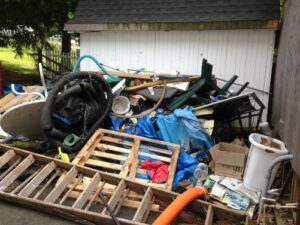Grey Oaks Real Estate sector offers huge potential for long-term gains and financial security. However, it’s not without its risks. Conducting proper market research can mitigate these risks and help you achieve a higher return on investment.

Studies suggest that real estate markets are highly responsive to new information. This information can shift the market away from Pareto-efficient outcomes.
Real estate professionals need a wide range of marketing tools to effectively reach prospective clients. The most effective strategies employ a variety of online and offline tactics to maximize customer acquisition and retention. In addition to a professional website that features a full MLS-integrated property listing, consider implementing an online booking option for a free consultation with a real estate broker. This enables customers to schedule an appointment from anywhere they have internet access, and can significantly increase your customer reach.
Another creative way to market your real estate business is by creating a social media campaign that leverages the popularity of popular local hashtags or events. For example, you can create a Facebook post that highlights the best restaurants in your area and offers a gift card to one lucky person who likes or comments on the post. This type of promotion allows you to connect with new and existing clients in an authentic way while building brand awareness.
Email marketing is another highly effective marketing tool for real estate agents. However, it is important to be careful not to bombard your sphere of influence with too many emails or content that isn’t relevant to their needs. A great way to mitigate this risk is by using a CRM tool that offers the ability to segment and target your audience. This ensures that your message is heard by the right people, without wasting time and money on unqualified leads.
A real estate blog can also be a powerful marketing tool. In addition to featuring listings, blogs can be used to share client testimonials and advice about the home-buying process. You can even include informational content such as tips for landscaping a yard or staging a home to increase your visibility as a local expert.
Another great idea for real estate marketing is to host community events or sponsor charity events in your neighborhood. This will allow you to connect with potential buyers face-to-face and position yourself as a community leader. Whether you are hosting a charity run, local fair or neighborhood clean-up day, these events can generate a lot of buzz about your business and help you attract new prospects.
Creating an Online Presence
Real estate professionals are constantly seeking new ways to reach potential clients and grow their business. In this highly competitive market, a well-established online presence can help establish brand credibility and make it easier for prospective buyers and sellers to connect with your agency. However, creating and maintaining a strong digital profile can be challenging without the proper tools and resources.
Building a stand-out online reputation in the real estate industry starts with understanding your niche and why you do what you do. Once you’ve nailed down your “why,” it’s time to focus on your online marketing strategies.
With more and more prospective clients relying on online platforms to search for property information, your digital profile becomes a virtual showcase, shaping views and guiding choices. Creating useful content, optimizing for local searches, and leveraging social media can help you create a consistent brand identity and boost your search engine rankings.
Providing valuable content to your audience is one of the best ways to build trust and establish yourself as an expert in your field. Posting real estate market updates, home decor tips, and other informative pieces can establish your authority and position you as a trusted source of information in the industry. In addition, incorporating the right keywords in your content can also improve your SEO performance and boost your website’s visibility in search results.
While developing a robust online presence can be time-consuming for real estate agents, hiring professional agencies that specialize in SEO and web design can save you from the hassle of managing these aspects on your own. These firms can handle everything from keyword research and website optimization to backlink creation and ensuring that your site is mobile-friendly, all while establishing a consistent digital identity for your business.
The internet is a vast space with limitless opportunities, but it can be challenging to find the right customers in your niche. Establishing a stand-out digital presence can help you overcome these obstacles and become the go-to real estate agency in your area. With the right marketing strategy, you can attract and engage prospects and convert them into clients with your unique value proposition.
Creating a Personal Bond with Potential Clients
Real estate agents are typically extroverts who excel in creating a personal bond with clients. Unfortunately, the COVID-19 pandemic has made it much harder for them to build relationships with potential clients without physically interacting with them. However, real estate agents who know their target audience can still create an effective communication strategy that appeals to them.
One way to do this is by humanizing your business on your website. Show pictures of yourself doing activities other than real estate, and include a personal biography with more than just your experience as an agent. You can also add resources about other topics that your clients might find helpful, such as health-related information.
Creating a Memorable Introduction
When you’re looking to make a lasting impression on your prospects, creating an introduction video is a great way to show off your personality and connect with potential clients. By telling a story, you can establish trust and showcase your expertise in the real estate industry. Using a professional production studio and an experienced director can help you create a compelling introduction that leaves a positive impact on your prospects.
Start with a clear and concise statement that explains what type of property you can assist buyers and sellers with. Be sure to include your background and experience in the real estate market, as well as any specific skills you can offer. You may also want to include a personal touch by including your hobbies or family life. This will allow prospects to get to know you on a more personal level and will make it easier for them to decide whether or not they want to work with you.
While it is important to highlight your previous accomplishments, you should also be careful not to over-sell yourself. If you spend too much time talking about your past successes, the prospect will be overwhelmed and will not have any motivation to keep reading. Keep in mind that your introduction is just one point of your business plan and that you will discuss your solution in the next section.
Once you’ve drafted your introduction, take some time to review it and edit it to ensure that it’s free of grammatical errors. It’s also a good idea to test out the video with a friend or colleague who doesn’t have any connection to the real estate industry.


